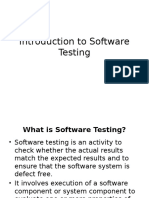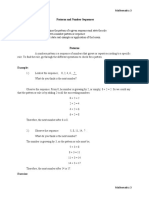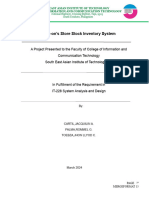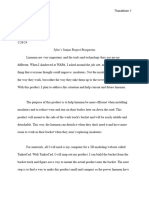0% found this document useful (0 votes)
11 views11 pagesSoftware Testing
The document discusses various types of software testing essential for quality assurance in development, including manual and automated testing. It outlines the importance of unit, integration, and system testing in ensuring that software components function correctly both individually and together. By employing these testing methods, developers can catch issues early and deliver reliable software products.
Uploaded by
rajeev55119Copyright
© © All Rights Reserved
We take content rights seriously. If you suspect this is your content, claim it here.
Available Formats
Download as PPTX, PDF, TXT or read online on Scribd
0% found this document useful (0 votes)
11 views11 pagesSoftware Testing
The document discusses various types of software testing essential for quality assurance in development, including manual and automated testing. It outlines the importance of unit, integration, and system testing in ensuring that software components function correctly both individually and together. By employing these testing methods, developers can catch issues early and deliver reliable software products.
Uploaded by
rajeev55119Copyright
© © All Rights Reserved
We take content rights seriously. If you suspect this is your content, claim it here.
Available Formats
Download as PPTX, PDF, TXT or read online on Scribd
/ 11
























































































